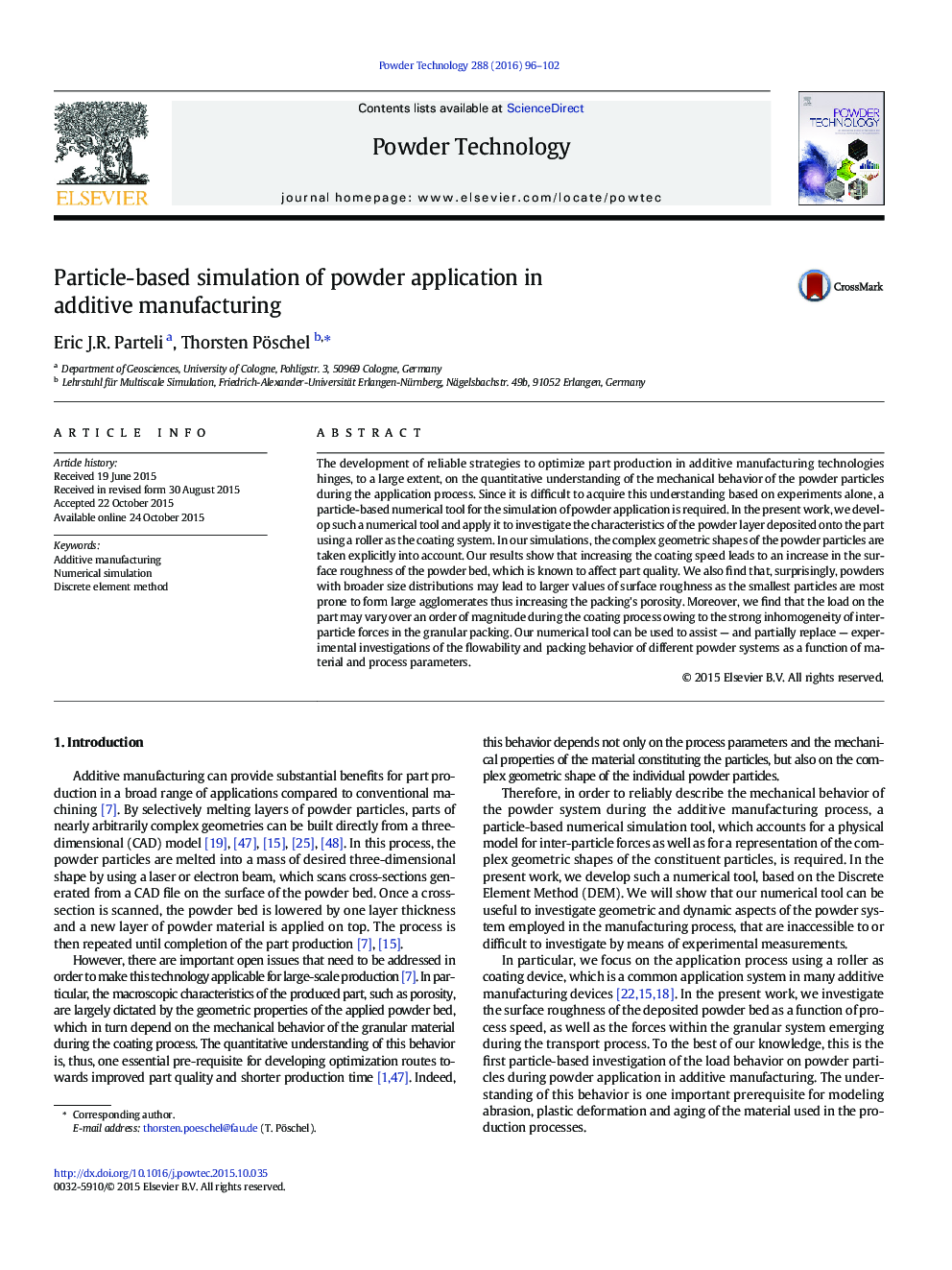| Article ID | Journal | Published Year | Pages | File Type |
|---|---|---|---|---|
| 235486 | Powder Technology | 2016 | 7 Pages |
•We model the transport of powder particles in additive manufacturing.•Our DEM simulations account for the complex powder particle shapes.•The load on the part varies over an order of magnitude during the coating process.•The surface roughness of the powder bed increases with the process speed.•Broader particle size distributions may result in powder layers of higher porosity.
The development of reliable strategies to optimize part production in additive manufacturing technologies hinges, to a large extent, on the quantitative understanding of the mechanical behavior of the powder particles during the application process. Since it is difficult to acquire this understanding based on experiments alone, a particle-based numerical tool for the simulation of powder application is required. In the present work, we develop such a numerical tool and apply it to investigate the characteristics of the powder layer deposited onto the part using a roller as the coating system. In our simulations, the complex geometric shapes of the powder particles are taken explicitly into account. Our results show that increasing the coating speed leads to an increase in the surface roughness of the powder bed, which is known to affect part quality. We also find that, surprisingly, powders with broader size distributions may lead to larger values of surface roughness as the smallest particles are most prone to form large agglomerates thus increasing the packing's porosity. Moreover, we find that the load on the part may vary over an order of magnitude during the coating process owing to the strong inhomogeneity of inter-particle forces in the granular packing. Our numerical tool can be used to assist — and partially replace — experimental investigations of the flowability and packing behavior of different powder systems as a function of material and process parameters.
